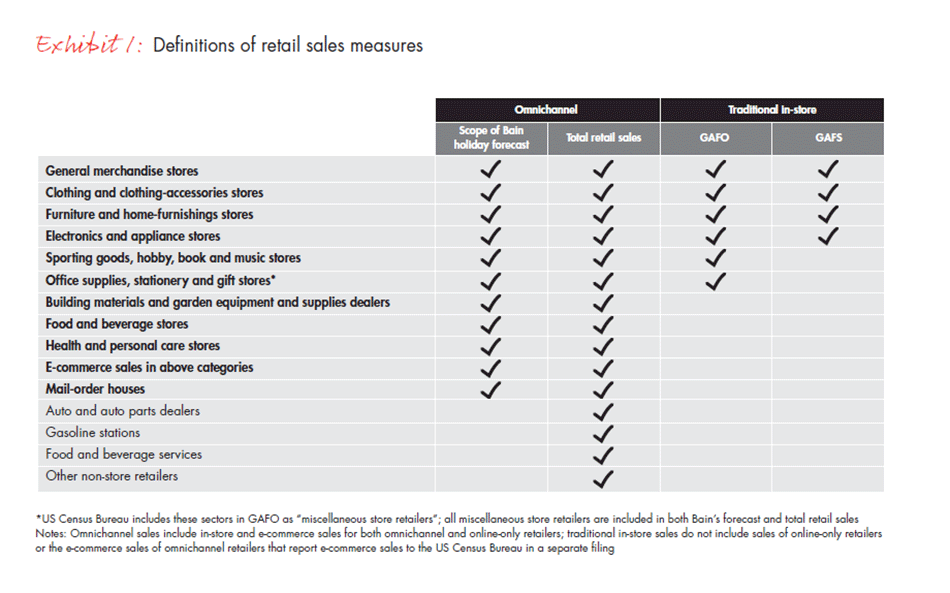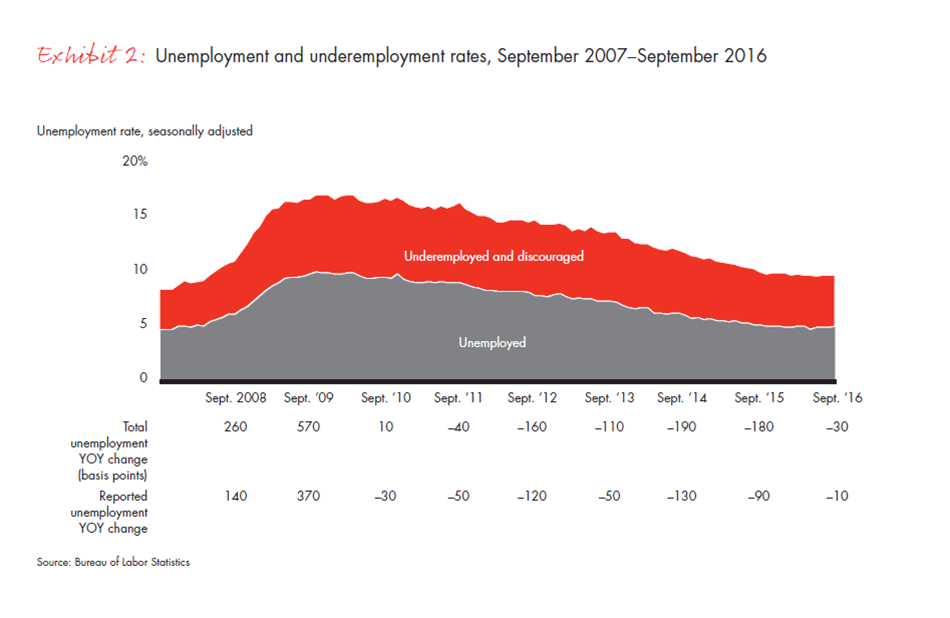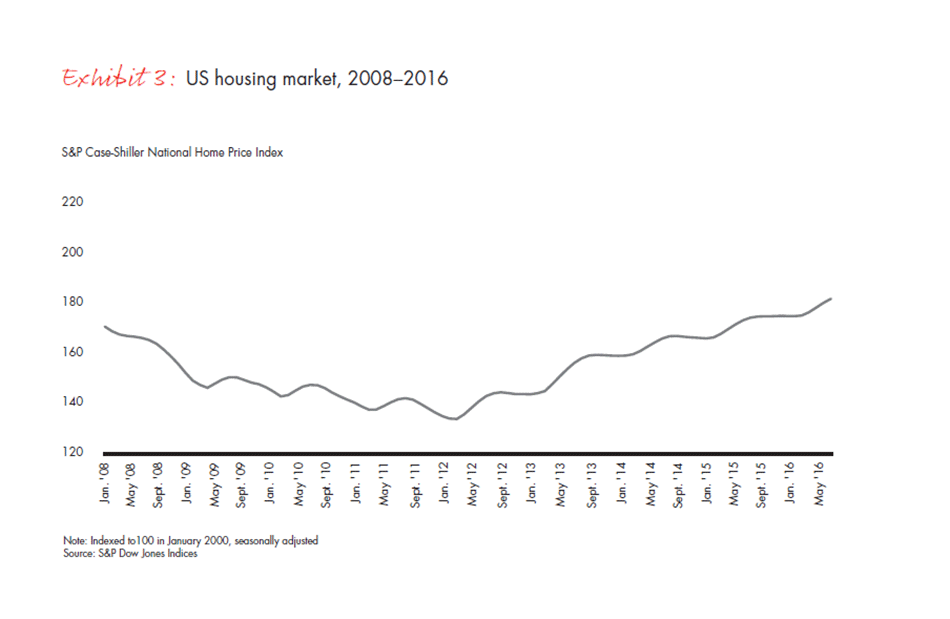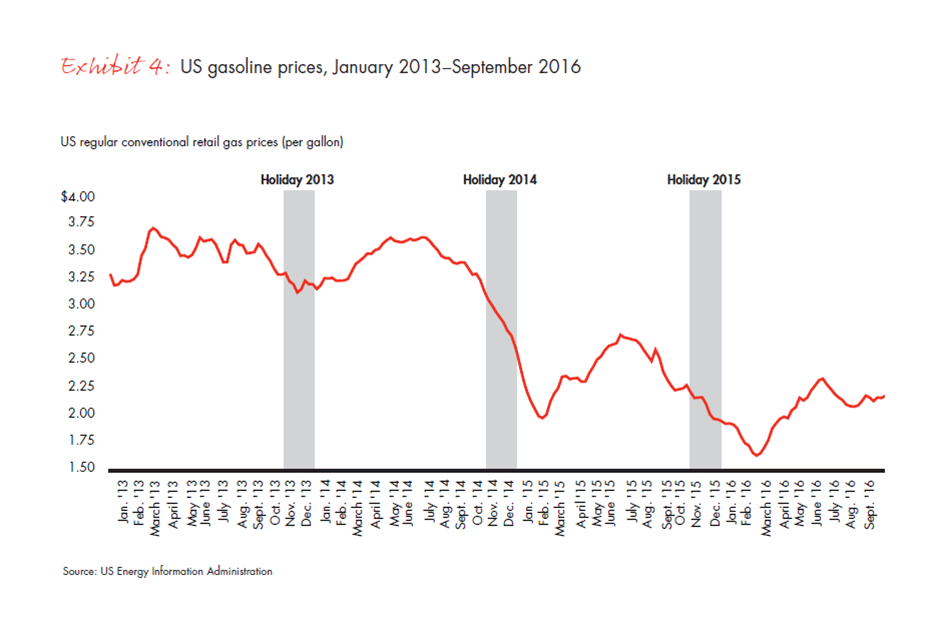Brief
 }
}
Bain & Company is forecasting 3.5% to 3.9% growth in US retail sales this holiday season. At work, middling macroeconomic factors combined with moderate sales momentum heading into the holidays. Yet within this average forecast lie meaningful differences by channel, consumer demographics and retail sector. Bright spots include increased spending via smartphones and tablets, increased spending by lower-income households and increased spending in the personal-care and home goods categories.
Unwrapping the forecast
Bain expects total US retail sales to grow by 3.5% to 3.9% this holiday season. The midpoint of this range meets last year’s growth of 3.7%; the high end is in line with the historical five-year average of 3.9% growth (see Figure 1). We define holiday retail sales as in-store and e-commerce sales during the months of November and December, excluding sales by auto and auto parts dealers, gas stations and restaurants (see Exhibit 1 in the Appendix).
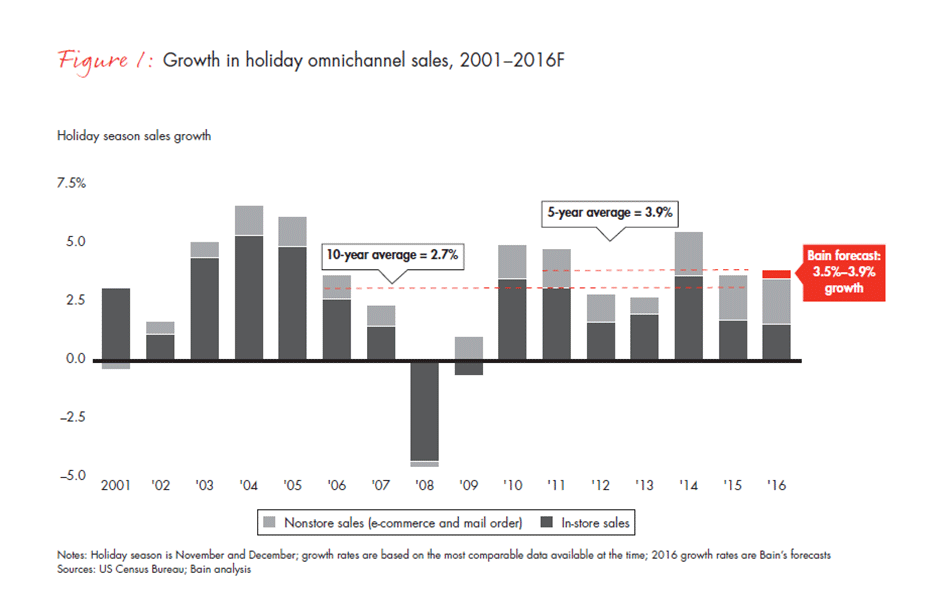
Macroeconomic indicators suggest mediocre growth in retail spending this holiday season. Many consumers have more money to spend on holiday gifts this year, a function of lower unemployment rates, higher wages across the board, and lower consumer interest rates and gas prices (see Figure 2). But offsetting these positive indicators are rising healthcare and housing costs, deflationary dynamics in the electronics and grocery categories, and volatility in the stock market.
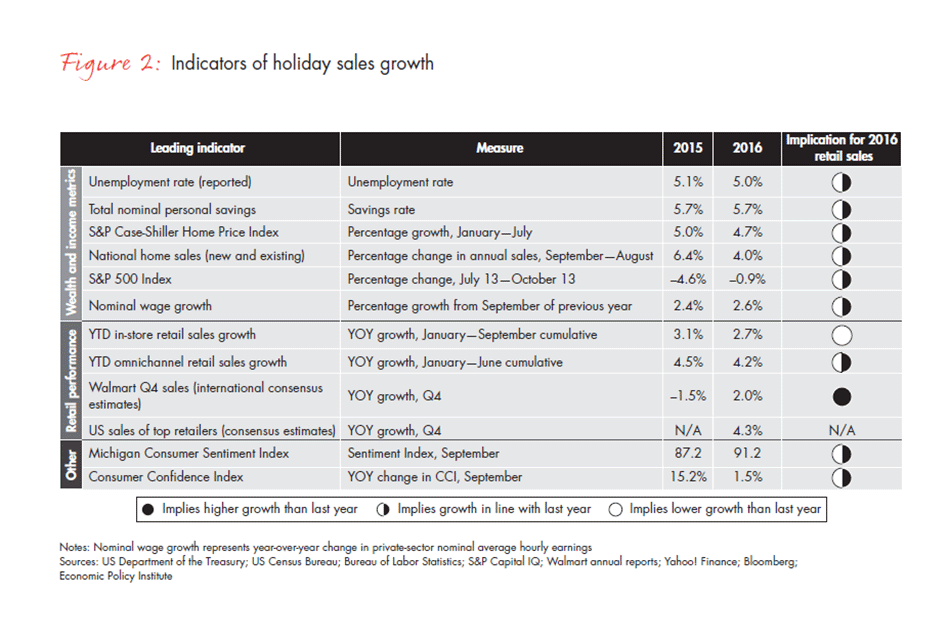
A closer look at our forecast provides insight into winners and losers, and winning strategies. We expect high growth in e-commerce sales and spending from lower-income households. We also expect sales to favor personal-care items and home goods and to shift later in the season.
- Record year for e-commerce. Although in-store sales will remain the largest channel, capturing more than 80% of sales this holiday season, the star of the season’s growth will be e-commerce. More than half of this year’s sales growth will come from e-commerce. Bain forecasts in-store retail sales growth slightly above 2% this year, below the five-year historical average of 2.9%. But we expect e-commerce sales to grow approximately 15% this year, slightly above the five-year historical average of 14.7%. About 65% of e-commerce purchases are made on computers, 25% on tablets and 10% on mobile phones. Purchases on mobile phones and tablets could see as much as 25% growth this holiday season, highlighting the importance of effective mobile applications and mobile-friendly sites. We also expect more consumers to take advantage of opportunities to buy online and pick up in stores.
- Lower-income revival. Although affluent households will still account for the largest portion of holiday sales, lower-income households are most likely to increase their spending this year (see Figure 3). After nearly a decade of high unemployment and wage deflation, this cohort is experiencing the first significant rise in household income since the recession (see Figure 4), and its members tend to spend incremental earnings rather than save them. This group also benefits most from lower gas prices. On the other hand, affluent households are likely to be more cautious in their spending this year, particularly leading up to the US election. With two-thirds of their assets in stocks, they will be keeping an eye on the market, watching for both volatility and doldrums. Finally, continued growth in the housing market and low mortgage rates are likely to keep growth in spending by aspirational households in line with last year.
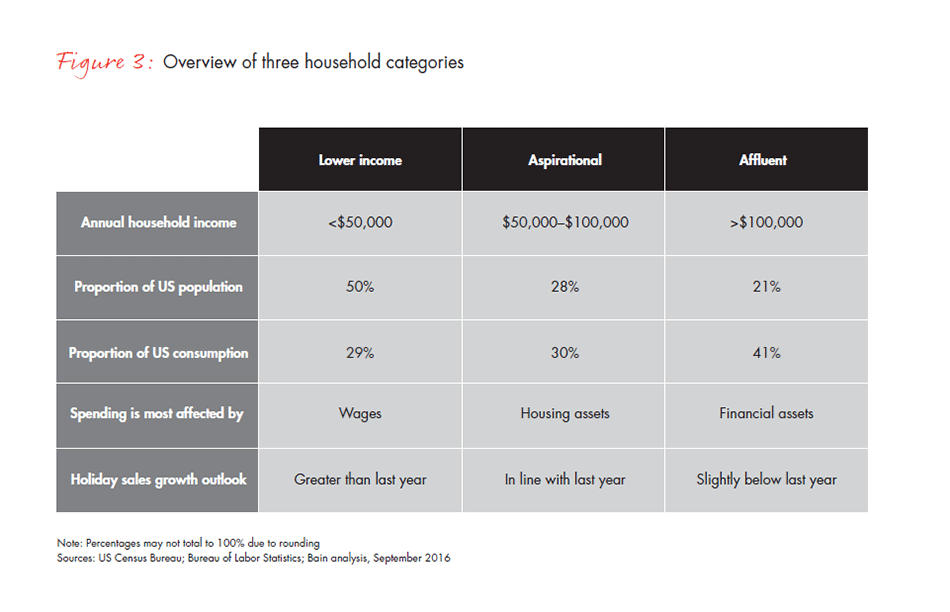
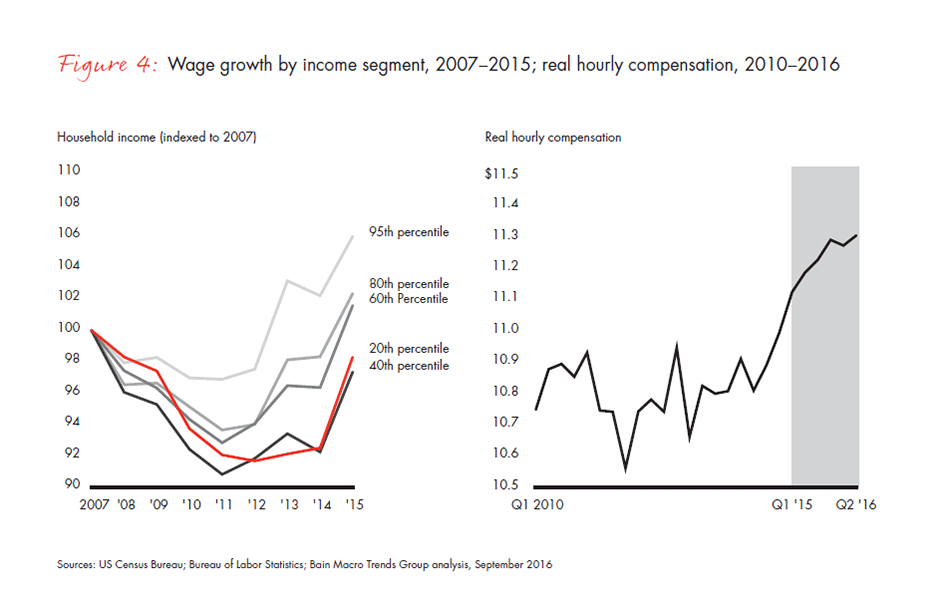
- Wishing for personal-care items and home goods. We see continued momentum in sales in the personal-care, building and garden, and furniture categories (see Figure 5). Sales of prestige beauty products—a component of the personal-care category—are experiencing high growth as an attainable luxury and as beauty and health become increasingly linked in consumers’ minds. Home goods have benefited from continued growth in the housing market and consumers spending more on remodeling their homes. Additionally, specialty e-commerce retailers have improved both the access to and ease of purchasing home goods and furniture. Last year’s warm winter slowed apparel sales, but colder temperatures are expected this year, which should increase sales in the category, particularly sales of cold weather apparel. Also, Chinese tourism has rebounded this year, a good sign for the apparel category’s luxury sales. Chinese tourists account for one-fifth of US luxury sales. Meanwhile, growth in consumer electronics sales is down and not likely to rebound this holiday season. Apple heavily promoted its new iPhone 7 well ahead of the holidays. And clearly the innovation that sparks spending is lacking. For example, we are midway through a gaming console cycle. And the category hasn’t been helped by Samsung’s recent recall of the Galaxy Note 7.
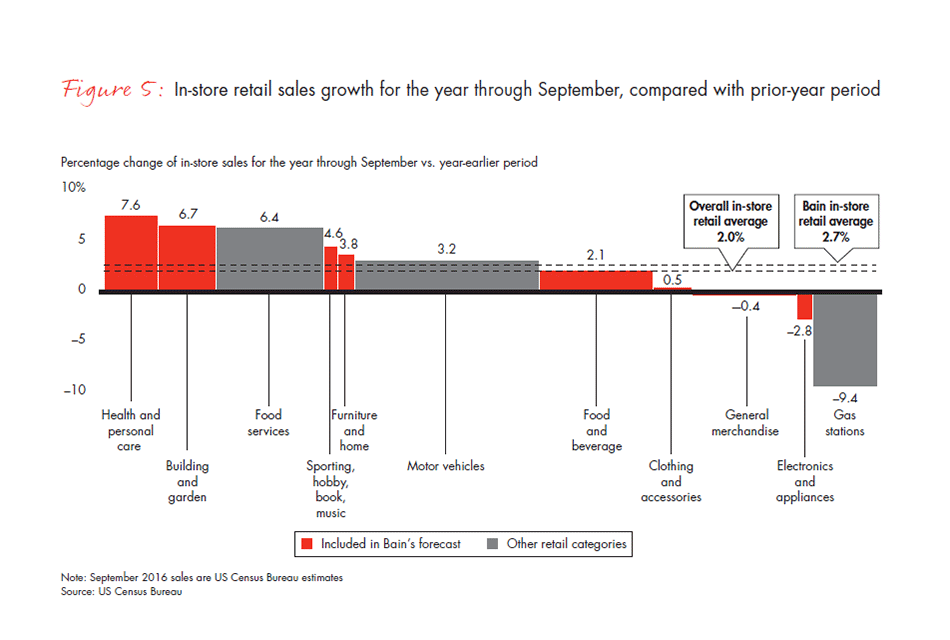
- The weekly shopping cadence. This year’s calendar is unusual. The election is late, Thanksgiving is early and Christmas Day falls on a Sunday. Although we don’t think overall sales will be impacted, we do think that the timing of sales will be. First, the pace of shopping tends to slow before an election, with consumers waiting to make purchases until later in November. Second, an early Thanksgiving lengthens the shopping period leading up to the holiday. And, finally, a Saturday Christmas Eve may be tailor-made for last-minute shopping. A slower start in early November could spark a flurry of promotional activity, as retailers work to increase sales and make room for new inventory.
Consumers have money to spend this year, but they are spending less on retail categories and more on nonretail categories.
- Cautious spending so far this year. Consumers have been somewhat slow to spend this year. Year-to-date sales growth in stores is 2.7%, below the 3.1% sales growth during the same period last year. E-commerce sales in the first half of this year have grown in line with last year. Retail sales can change dramatically from month to month: This year an unseasonably warm January and heat waves in July slowed growth; several other months showed above-average growth. Growth for the last two reported months, August and September, came in slightly below last year, although the rates may yet be revised significantly.
- More spending on healthcare, housing and restaurants. Services make up two-thirds of consumer spending, and consumers are spending an ever-larger portion of their income on healthcare and housing services than they have in previous years. Healthcare spending grew by 5.5% between September 2015 and August 2016, and now makes up almost a fifth of consumers’ total spending. Housing costs, especially rents, are rising, taking up more dollars. Consumers also are eating out more often: Food services sales have grown by 6.4% so far this year compared with the same period last year. Key to that growth is an increase in the number of young adults without children and older empty nesters. Fast-casual restaurants are the fastest growing restaurant segment, with double-digit sales growth. Consumers are still spending on gas and groceries, but lower prices mean they’re spending less.
Ringing in the holiday season
As you can see, an “average” forecast conceals important variations among categories, channels and consumer segments. How effectively retailers capitalize on these variations will determine their success. And don’t be fooled by early reports of growth rates. It can take months for “real” data to become available, and even that data is prone to revision. A cautionary tale from last year: Initial data released at the end of the year indicated 3.1% holiday sales growth; that rate was later revised to 3.7%, coming very close to our 4% forecast. What we do know for sure: Consumers have the money and credit to shop, and they now have 24/7 access to convenient shopping through e-commerce channels. We will examine the products and retail experiences that spur consumers to buy.
This year we are introducing new approaches and partnerships to bring you fi ndings on the dynamics affecting retailers this holiday season. We plan to track US sales data and innovations across the industry, as well as a series of hot topics that have an impact on retailers globally. Here’s a preview of our upcoming newsletters:
- Issue #2 (mid-November): Will Amazon Steal Christmas?
- Issue #3 (early December): Holiday Halftime Wrap
- Issue #4 (mid-December): What’s in Store This Holiday Season?
- Issue #5 (late January): Bain’s Post-Holiday Outlook: New Year’s Resolutions
Please let us know if you have specific topics you would like to learn more about. We look forward to sharing holiday headlines with you and hearing from you throughout the holiday season.
Appendix
